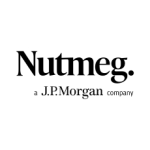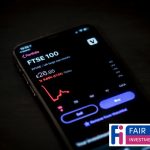Top Ten Reasons to Consider our 2013 Best Selling Income Investment
The hunt for a competitive fixed income continues to intensify amidst record low interest rates, historically low savings rates, above target inflation and little in the way of economic growth. However, by combining a high fixed income with conditional capital protection, one of the real investment stories of last year seems to be particularly well placed for these economic pressures.
The Enhanced Income Plan from Investec was our most popular income investment during 2013 and with continued pressures on savers to give serious thought to what is the best home for their money, has been of interest to both savers and investors alike. To help you understand why this plan has proved so popular, we take a look at our Top 10 reasons to consider this fixed income investment.
1. Fixed income
Receiving an investment income that is not reliant on the performance of the stock market is a rare thing. However, this is exactly what the fixed income investment achieves and as the title suggest, the exact amount you receive is known at the outset. Most other income investments offer a lower yield which is variable and so the opportunity to access a healthy and predictable income stream is clearly a key feature.
2. High income
Not only is the income fixed, but it is often offered at a high level with a 5.64% yield (link) currently available. When compared to dividend yields available from many UK equity income funds, this is considerably higher although funds do have the opportunity to benefit from capital growth whilst the fixed income investment does not.
3. Monthly income
Not only does the investment offer the opportunity for a competitive level of income, but another popular feature is the monthly payment frequency since this is the most useful in terms of budgeting, especially if you are looking to supplement existing income. Many other income investments that promote their yield only offer biannual or quarterly payments.
4. Fixed term
In addition to the income being fixed, the Enhanced Income Plan also has a fixed term of six years. This therefore provides the investor not only with exactly how much they will receive and when it will be paid, but also for how long these payments will continue and so will particularly appeal to those looking to plan for the future.
Although you do have the option to withdraw your money during the term, early withdrawal could result in you getting back less than you invested and the plan is really designed to be held for the full term.
5. Conditional capital protection
Understanding the risk v reward of an investment is an important consideration, especially since the opportunity to receive higher returns than might be available from cash deposits inevitably requires the investor to put their capital at risk. This fixed income investment contains what is known as conditional capital protection which means that provided the FTSE 100 does not fall by more than 50%, your initial capital will be returned in full.
This is measured throughout the investment term and if the Index does fall by more than 50% and also fails to recover by the end of the plan, your initial investment will be reduced by 1% for every 1% reduction in the final value. Therefore, there is a risk that you could lose some or all of your initial capital. The fixed income part of your investment remains unaffected by the FTSE.
6. ISA eligibility – tax free income
The Enhanced Income Plan accepts new ISA investments and you are also able to transfer existing ISAs. The income paid from an investment held within an ISA is not then subject to tax, thereby resulting in the payment to the investor of a high level of tax free income – attractive in any economic climate. Since these investments are normally offered for a limited period, please always note the ISA transfer deadline for applications into the current issue.
For the current tax year (2013/14) the annual allowance is £11,520 per individual. The plan also accepts transfers from Stocks & Shares ISAs as well as Cash ISAs but you should be aware that once Cash ISAs are transferred to a Stocks & Shares ISA, they cannot be transferred back to a Cash ISA. Please note that this information is based on current law and practice which may change at any time.
7. No hidden charges – a cost effective option
All of the charges within the plan are taken into account in the headline return so there are no hidden surprises. This should be compared to a typical UK equity fund which will often have an initial charge of up to 5.5% and total annual charges of 1.95% on average (source: IMA, 2012).
This annual cost associated with the management of funds also happens each and every year (in both actively managed and tracker funds) which helps to explain the number of funds which find it difficult to outperform the FTSE, especially over the medium term. This ongoing cost is not a feature of fixed income investments since all charges are included in the headline rate of return.
8. A disciplined approach
The mechanics of these investments remove the need for the investor to worry about when to come out of the market since the decision is made for them by the pre-defined investment term. When the plan matures, the investor then has the opportunity to reassess their options.
9. Defined return v defined risk
The principal of defined risk v defined return is useful when considering fixed income investments such as the Enhanced Income Plan since the fixed return and the criteria required to provide a return of capital are known at the very outset.
A good benchmark for assessing your investment is to compare what you could get from a fixed rate deposit over a similar timeframe and then consider whether you are comfortable with the risk to your capital in order to receive the higher return. In real terms a 5.64% fixed return offers the potential for a premium over current 5 year fixed rates in the region of 2.4% each year. However, the plan does put your capital at risk and should only be considered by those who are prepared to accept the possibility of losing some or all of your investment.
10. Investec Bank plc
Investec is an international specialist bank and asset manager with its main operations in the UK and South Africa. Established in 1974, as at April 2013 they look after £96.8 billion of customer assets as well as a further £25.3 billion of customer deposits and employ around 7,575 people. They specialise in a number of areas, particularly within the banking sector and are a leading provider of investment plans and structured deposits.
Understanding counterparty risk
Your investment in the Enhanced Income Plan is used to purchase securities issued by Investec Bank plc and so their ability to meet financial obligations becomes an important consideration. This is known as credit risk and means that in the event of Investec going into liquidation, you could lose any future returns as well as some or all of your initial investment and you would not be covered by the Financial Services Compensation Scheme for default alone.
One accepted method of determining credit worthiness of a company is to look at credit ratings issued and regularly reviewed by independent companies known as ratings agencies. Moody’s is one of main global credit rating agencies and as at 30th September 2013, Investec Bank plc has a credit rating of Baa3 with a negative outlook. The ‘Baa’ rating denotes Investec is subject to moderate credit risk. They are considered medium grade and as such may possess certain speculative characteristics. The ‘1’ is at the upper end of this rating grade and ‘3’ is at the lower end. The negative outlook indicates that the rating may be lowered in the short to medium term (between 6 months to 2 years).
Fair Investment conclusion
The market for income investments is full of attractive yields but it is important to fully understand how each investment works and the risks it entails. Whether this is inflation risk, risk of capital loss or fluctuating yields, it should always be remembered that it is the income and capital loss/rise combined that produce your overall return.
Commenting on the Enhanced Income Plan from Investec, head of savings and investments at Fair Investment Company Oliver Roylance-Smith said: “The high level of fixed income, monthly payment frequency and fixed term provides a level of certainty and makes for an attractive investment. With low interest rates and uncertainty around future inflation, this plan provides a competitive balance of risk versus reward that could be considered by both savers and investors.”
The plan is open for direct investments, ISAs and ISA transfers with a minimum investment of £3,000.
Click for more information about the Investec Enhanced Income Plan >>
No news, feature article or comment should be seen as a personal recommendation to invest. Prior to making any decision to invest, you should ensure that you are familiar with the risks associated with a particular investment. If you are at all unsure of the suitability of a particular investment, both in respect of its objectives and its risk profile, you should seek independent financial advice. Tax treatment depends on your individual circumstances and may change.
This is a structured investment plan that is not capital protected and is not covered by the Financial Services Compensation Scheme (FSCS) for default alone. There is a risk of losing some or all of your initial investment. There is a risk that the company backing the plan or any company associated with the plan may be unable to repay your initial investment and any returns stated. In addition, you may not get back the full amount of your initial investment if the plan is not held for the full term. The past performance of the FTSE 100 Index is not a guide to its future performance.
Tags





